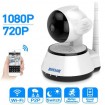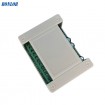While intrusion alarms are nothing new, they reign supreme in security. Today, innovation is boosting reliability, advancing scalability, reinforcing integration and catering to market needs.
For intrusion alarm sensors and detectors , most product development efforts focus on enhancing reliability, making designs more compact, installations more discreet and enabling IP (network) communication. An emerging trend is customer demand for integrated solutions, covering onsite and immediate response personnel, electronic security and alarm systems.
PIR cameras (P-cams) are easy to manage and very trendy. They combine digital cameras, two-way premise and communications with central monitoring stations (CMS), and wireless sensors. The camera — housed with the passive infrared sensor — films events that set off alarms. It is activated only when the system is under surveillance and one of the sensors detects movement.
Via an encrypted radio link, footage is immediately relayed to the CMS. Thereby, CMS operators see video in real time, allowing them to determine whether the intrusion is real. Alarm and video transmission over Ethernet, global system for mobile communications (GSM) or general packet radio service (GPRS) cell notification is also available.
Multilevel sensitivity adjustment to detect motion of real interest (pet immunity) and integrity of multiple detection principles (dual technology like PIR or infrared IR combined with microwave) are crucial technologies. Added interaction between the premises and central station or users is also notable. These features are realized via Internet and GSM.













